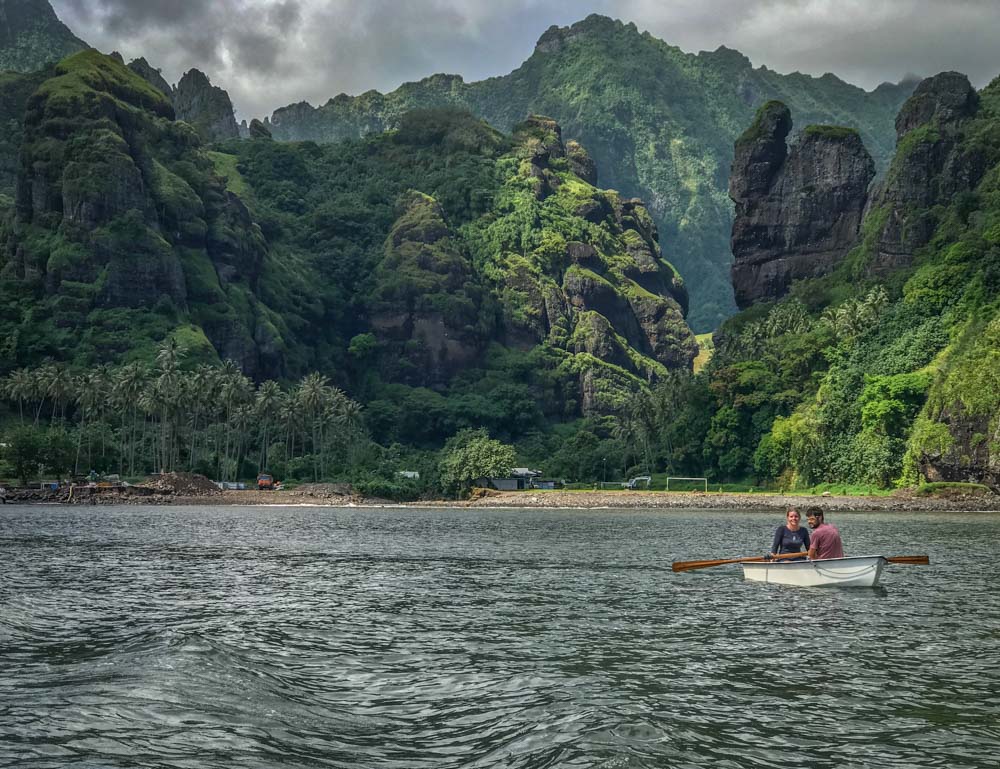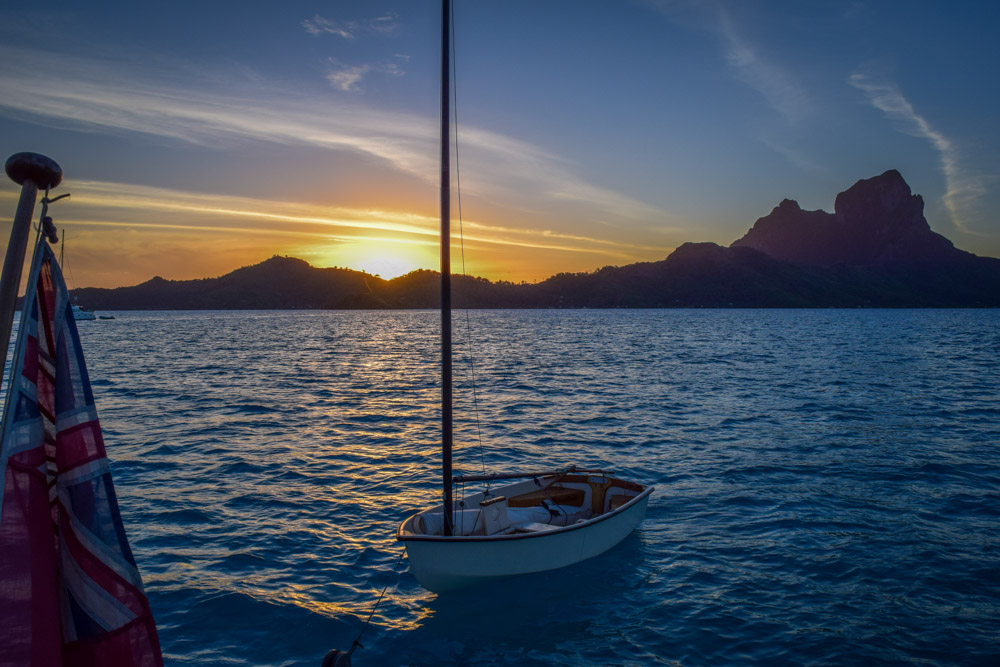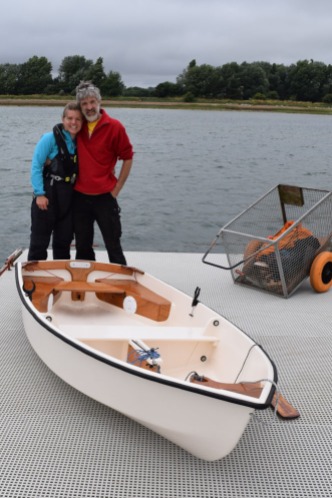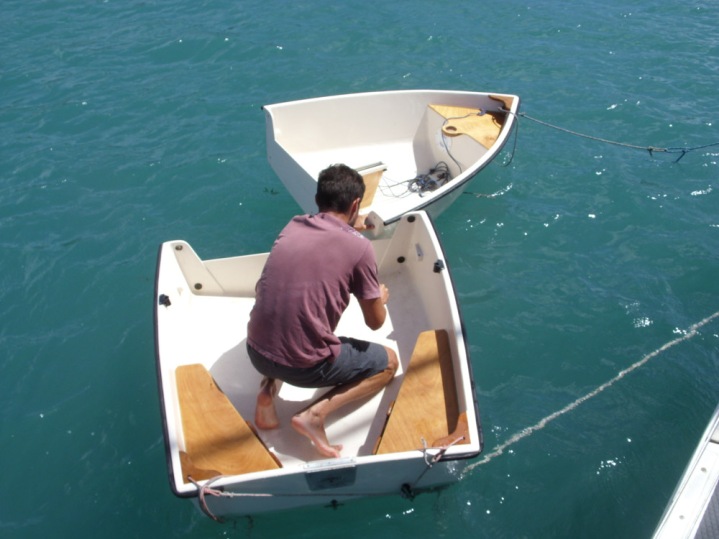Quite possibly the most loved dinghy in the world, our tender was built for us by Amy’s dad. She is nicknamed ‘The Machine’, after the British band ‘Florence and The Machine’ and the fact that she is our rowing machine. It could be the amount of love that went into building her or just that we have been at sea too long, but we often find ourselves talking to the little dinghy that has traveled half way around the world with us.
The Machine is a 9ft nesting Spindrift built to a design from B&B Yacht Design. She is made using the stitch and glue method from plywood and epoxy.
We wanted a hard tender that we could row and sail, but have very little space on deck to store one whilst at sea, so a nesting tender seemed like the perfect solution.

Rowing
Although we do have a small 2.3hp outboard, we tend to row everywhere. With one person, the dinghy rows like a dream. With two, the stern tends to dig in and although it still rows well it is much harder. Another set of rowlocks and a seat over the dagger-board casing would allow the rower to sit further forward would solve this problem. With 3 or 4 people in the dinghy, there is no space to swing an oar. In this situation we either paddle or put the engine on.

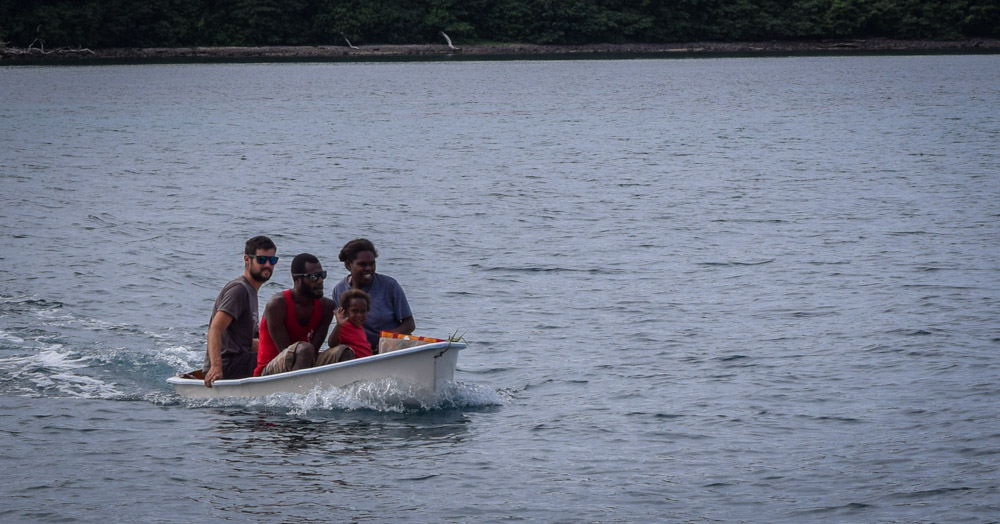
The Sailing Rig
Call us purist hippies but there is something beautiful about sailing across an ocean and then rigging your dinghy and sailing ashore. No noisy smelly engine, just the power of the wind transporting you to a new destination. As we have both spent a lot of our life sailing dinghies, it made sense for us to have a tender that we could sail for fun. The 9ft Spindrift sails best single-handed, however we often squeeze in two of us and our kit for a day long dinghy expedition or load her to the gunnels with groceries on the way back from the shop.
The Machine sports an all carbon rig made from an old broken racing dinghy mast and a section of windsurfing mast for a boom. A good friend sleeved the mast for us so it easily comes in two pieces to store on deck. We deviated from the plans slightly to add a mast track so we can easily hoist/lower sail whilst afloat. We have one reefing point in the dacron sail and a simple off the boom sheeting system.


Storage
As the deck space we have available is not flat, we have an A-frame that slots onto the stern of the dinghy to make it level with the bow that sits on three hard wood blocks. We bolt the bow onto the deck and tie the stern on top using straps to D-rings on the deck. We were concerned about loosing her in a sea but she has withstood fairly major waves over the bow and like most cruisers we spend our time trying to avoid bashing into a sea.

Assembly
In calm conditions we are able to throw each half overboard, jump into the back half and bolt them together whilst in the water.
When the water is choppy we stand the stern on end on Florence’s side deck, hoist the bow on Florence’s spinnaker halyard, bolt the two halves together with the dinghy on end, then hoist her over the side using a pulley system to move her from vertical to horizontal. We use the reverse of this method to bring the dinghy onto the foredeck ready for disassembly.
Further thoughts
We absolutely love our dinghy, which is perfect for the two of us but if we had more space we would go for the 10ft version as we believe that it would carry loads better. It is a slight hassle to bolt together and launch but in reality takes less time than inflating a blow up dinghy.


